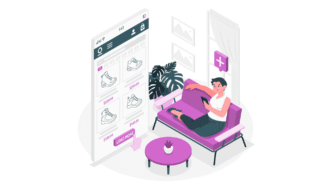LESSON OVERVIEW
The main objectives of this speaking lesson on walking are to:
- talk about the effects of walking;
- review vocabulary related to walking;
- watch a video where a doctor shares the health benefits of walking.
With this lesson, students discuss the benefits of walking, share their opinions and habits, and watch a video where a doctor explains the advantages of walking. They also explore different ways to enjoy walking and imagine they recommend ideas to a friend who wants to be healthier. In addition, students can do an extra activity where they revise useful vocabulary (e.g. get to a place, take a walk).
B1 / Intermediate45 min
60 minSpeaking ClassUnlimited Plan
This is a Speaking Class worksheet. It includes a variety of tasks that let your students practise their speaking skills. This lesson format does not focus on grammar or vocabulary. Learn more about it here.
WARM-UP AND VIDEO
This speaking lesson on walking starts with a warm-up. Students list the benefits of walking. At this point in the lesson, they can do an optional vocabulary exercise. In the task, students choose the correct words in sentences about walking habits and preferences. They also create different sentence endings by changing underlined parts. After that, students read opinions on walking, choose the ones which are true for them and give some details. Then, they choose the numbers they think are correct in statements about walking (e.g. The best walking speed is… ). When students check the answers, they say if the numbers surprise them. Next, they watch a video about walking and say what they find interesting. Then, they discuss questions about preferences and experiences with walking.
DISCUSSION
In this part of this speaking lesson on walking, students read about ideas of ways to enjoy walking (e.g. “Walk with a Doc” in the park, Guided city walk, etc.). They then do tasks where they discuss perspectives on walking activities. Following that, students imagine their friend wants to be healthier and comes up with different ideas (e.g. walk to work every day, walk whenever I talk on the phone, etc.). Students say which ideas they would recommend to their friend and which ones they wouldn’t. Students also practise useful language (e.g. Taking/walking/parking… is a good/bad idea because…) and explain their thoughts. Finally, they read quotes related to the symbolism of walking and personal journeys. Students choose the quote which could motivate their friend in the previous task to walk more. Next, they identify situations where other quotes could help people and explain how they would be beneficial.
WORKSHEETS
Subscribe to unlock these and many other Standalone lesson lesson plans with the Unlimited plan
Subscribe













Super nice idea for the lesson! I will definitely use it and go for a walk with my students after:)
Great, I hope your students enjoy it 🙂
A very nice lesson, plenty to talk about. My students really enjoyed it.
However, in the e-presentation there’s one slide missing: point 5 “Discuss the questions”. just after the video.
Thanks for sharing!
The questions from exercise 5 are in slide 18.
Thank you Ewa!